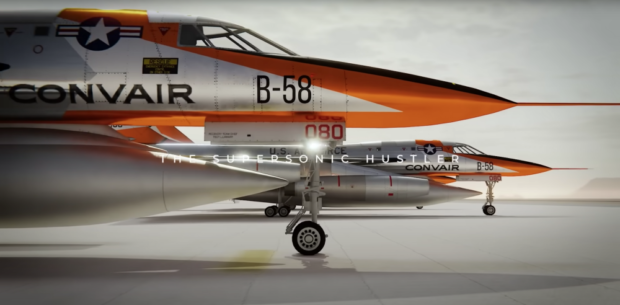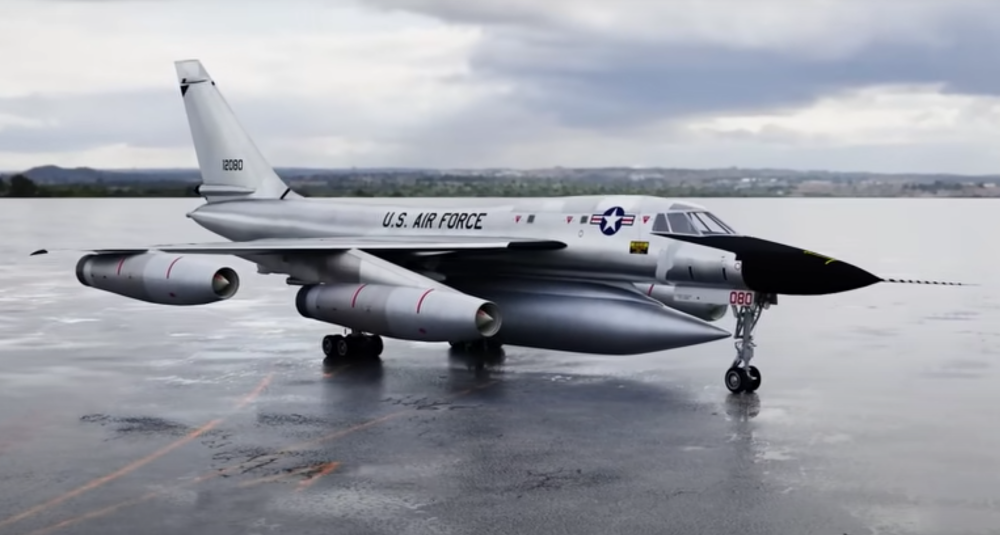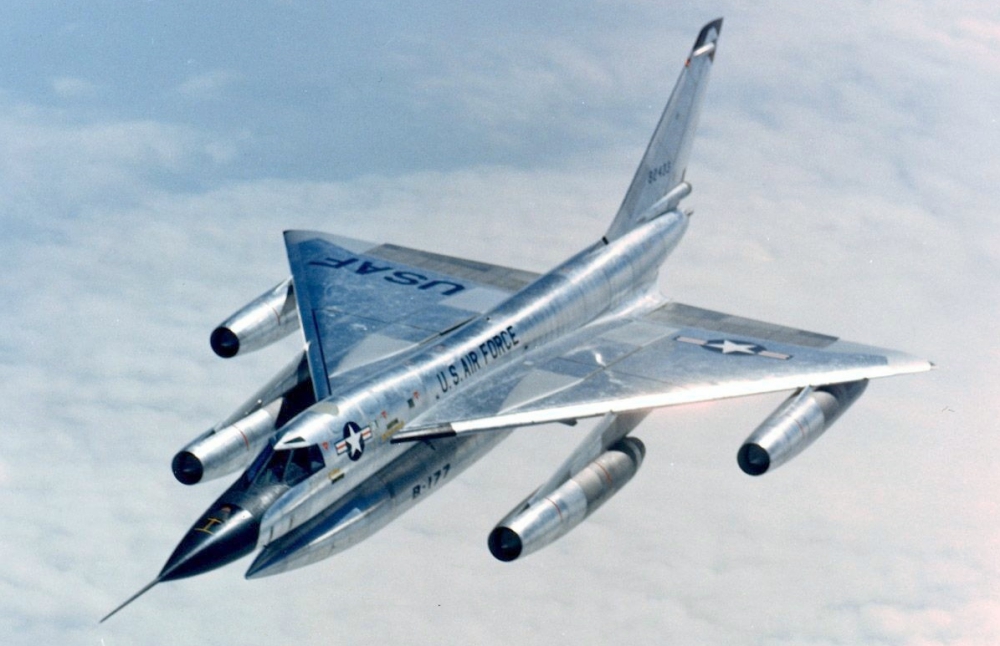The Convair B-58 Hustler, designed and produced by American aircraft manufacturer Convair, was the first operational bomber capable of Mach 2 flight.
The B-58 was developed during the 1950s for the United States Air Force (USAF) Strategic Air Command (SAC). To achieve the high speeds desired, Convair chose a delta wing design used by contemporary interceptors such as the Convair F-102.
The bomber was powered by four General Electric J79 engines in underwing pods. It had no bomb bay; it carried a single nuclear weapon plus fuel in a combination bomb/fuel pod underneath the fuselage. Later, four external hardpoints were added, enabling it to carry up to five weapons.
The B-58 entered service in March 1960, and flew for a decade with two SAC bomb wings – the 43rd Bombardment Wing and the 305th Bombardment Wing. It was considered difficult to fly, imposing a high workload upon its three-man crews.
Designed to replace the subsonic Boeing B-47 Stratojet strategic bomber, the B-58 became notorious for its sonic boom heard on the ground by the public as it passed overhead in supersonic flight.
The B-58 was designed to fly at high altitudes and supersonic speeds to avoid Soviet interceptors, but with the Soviet introduction of high-altitude surface-to-air missiles, the B-58 was forced to adopt a low-level penetration role that severely limited its range and strategic value. It was never used to deliver conventional bombs.
The B-58 was substantially more expensive to operate than other bombers, such as the Boeing B-52 Stratofortress, and required more frequent aerial refueling. The B-58 also suffered from a high rate of accidental losses. These factors resulted in a relatively brief operational career of ten years. The B-58 was succeeded in its role by the smaller, swing-wing FB-111A.
Sources: Wikipedia; YouTube



